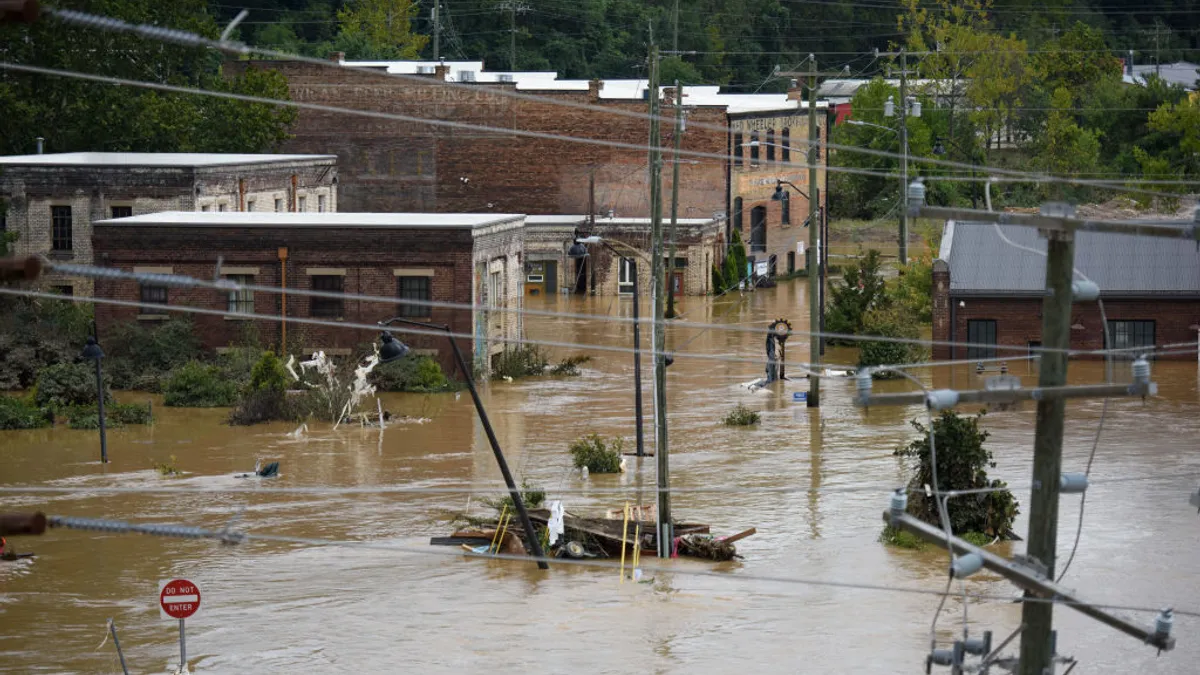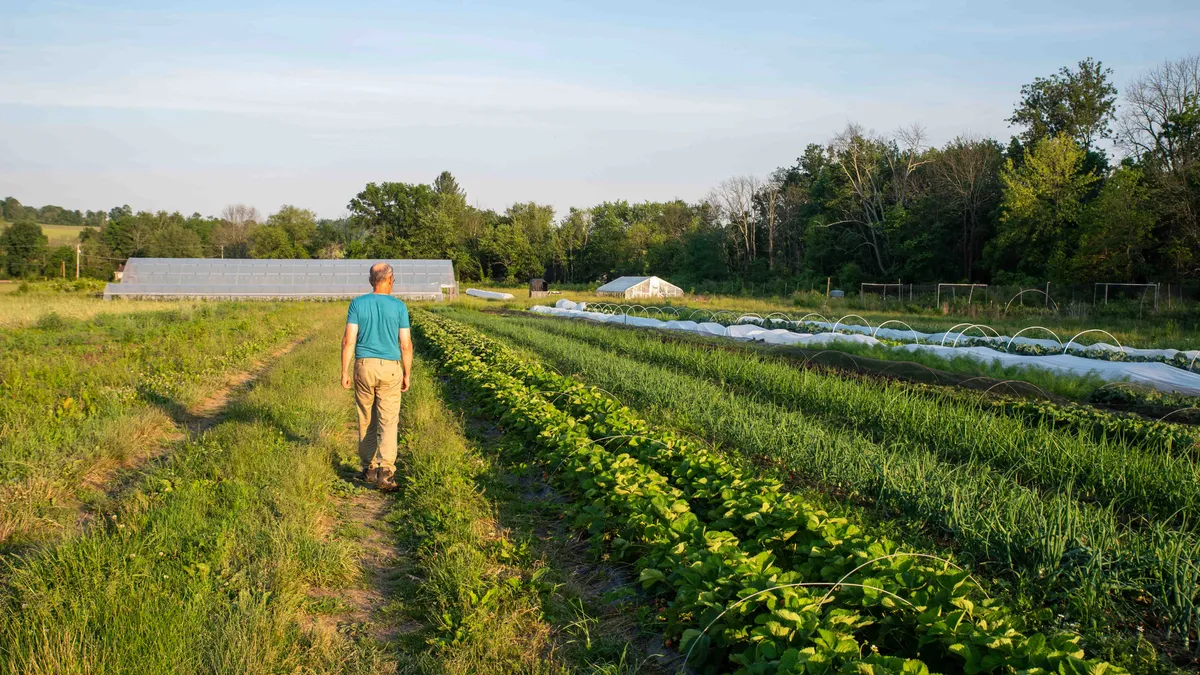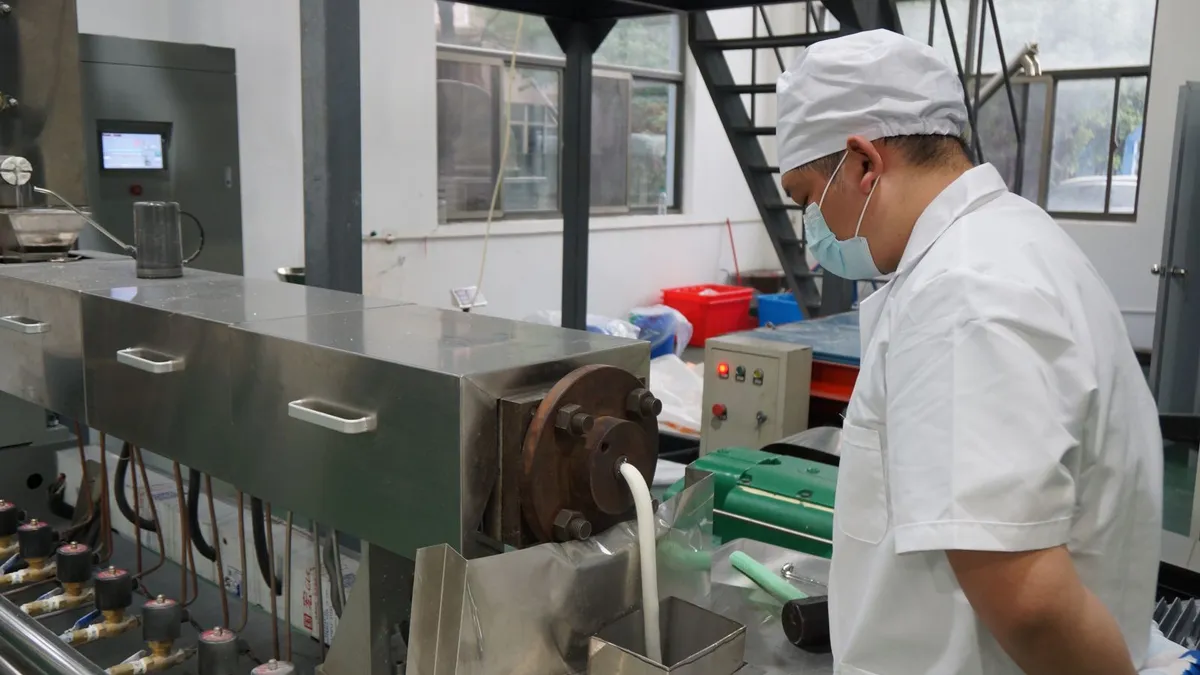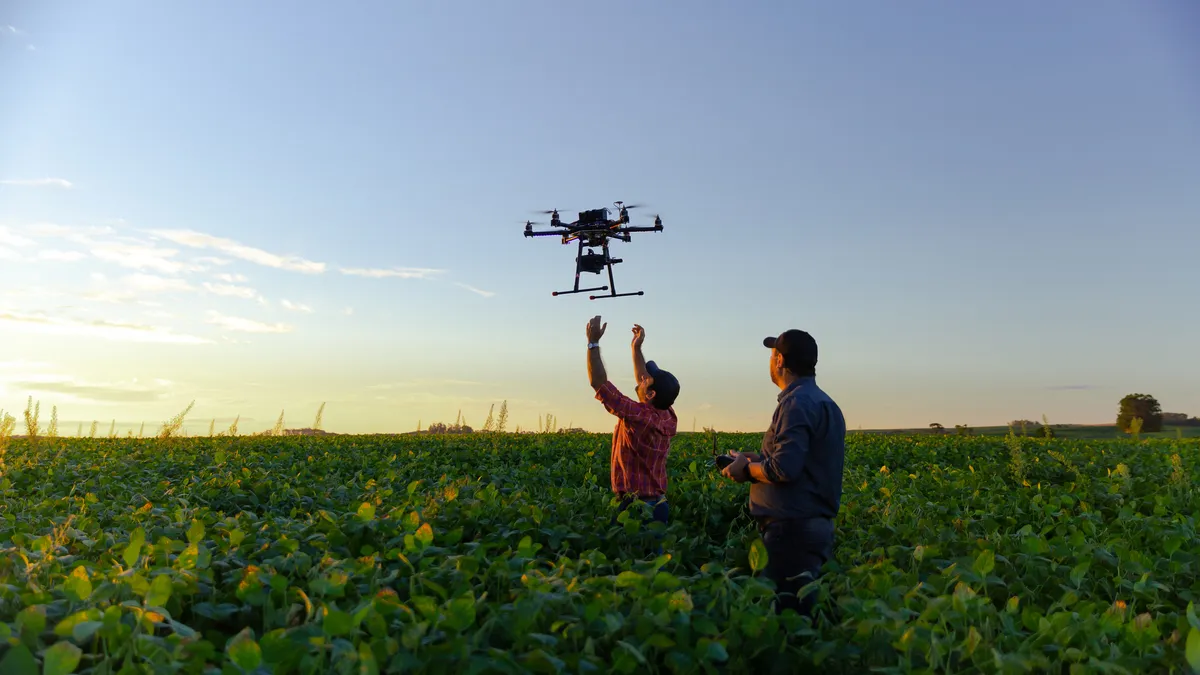Farmers and ranchers are picking up the pieces left by Hurricane Helene after the tropical storm barrelled through the Southeast, devastating crops, livestock and agriculture infrastructure.
While it’s still early to assess the damages from the Category 4 hurricane that made landfall Sept. 26, to the region's agriculture industry, more details are coming to light as farmers begin to assess their property damages and publicly share their accounts.
Flooded fields, lost crops and setbacks
Andrea Ashby, director of public affairs for North Carolina Department of Agriculture and Consumer Services, said it’s still early to know the full impact of Helene as farmers begin assessing their losses, but “we do anticipate damage will be major.”
Ashby told Agriculture Dive in an email that many fields near rivers are flooded and several nurseries have had plants washed away. She said she knew of at least one submerged apple orchard, as well as a dairy farm that lost its barn and milking equipment.
“Many people are still missing, many roads remain impassable, and areas of our mountains have been cut off from access,” Ashby wrote.
Farmers and ranchers are struggling to get feed and supplies due to flooding and road closures. Ashby said the department is working with dairy and livestock producers to secure feed, fencing and water needs through donations.
Some of the major commodities grown in affected parts of North Carolina include apples, tomatoes, dairy and beef cattle, trout and Christmas trees, Ashby said. Other key crops include corn, soybeans, tobacco, sweet potatoes and cotton.
Agritourism is taking a hit as u-pick operators assess their losses. North Carolina accounts for 20% of real Christmas trees grown in the United States, and is one of the leading apple producing states, according to association data.
“We don’t have any specific estimates on crop losses at this time because it is just too early in the process,” Ashby wrote.
In Georgia, the storm left catastrophic damage to poultry farms, pecan orchards and peanut fields. President Joe Biden, who toured a pecan farm in Ray City, Georgia, said he saw "acres of orchards wiped out," with "trees uprooted [and] debris everywhere."
“Decades of progress gone in a single instant," the president said during a press briefing Thursday.
USDA ramps up response with billions of dollars in losses expected
Helene is the third hurricane to make landfall in the Florida Gulf area over the past 14 months, following Idalia and Debby, which together caused more than $700 million in losses to crops, livestock and agricultural infrastructure. Damage from Helene will cost billions of dollars to repair, Biden said.
The affected areas from Helene cover over 4.8 million acres and encompasses more than 38,000 crop insurance policies, the USDA said. The department has instructed crop insurance companies to expedite payments and added new flexibilities for producers to speed up recovery efforts.
However, the process for recouping financial losses in the immediate aftermath of the storm has proved difficult: Many Farm Service Agency offices, which administer disaster programs and commodity payments, are themselves closed or damaged by the storm, Agriculture Secretary Tom Vilsack told reporters Friday at the World Dairy Expo in Madison, Wisconsin.
To help with staffing, Vilsack said the USDA has created "surge teams," temporarily transferring staff from non-affected areas of the country to help with disaster relief.
The department is also granting waivers and disaster flexibilities for people enrolled in food assistance programs, and funding rural development projects for damaged power lines and infrastructure. Vilsack said he expects insurance payments to be out by November.
“Whatever we can do, we're going to do, and we're going to try to do it as quickly as we possibly can,” he said.
Farmers, food giants come together to provide relief
In the aftermath of Helene, relief efforts are underway from Tyson Foods, Nestlé and other major agriculture and food companies, serving hot meals in affected areas and donating bottled water and other supplies to communities in need.
Nestlé is committing $2.3 million in donations, including more than $100,000 to charities around Gaffney, South Carolina, where one of the company’s prepared foods factories is located.
Pork producer Smithfield Foods is donating more than 30,000 pounds of protein to disaster relief organization Mercy Chefs, which serves free hot meals to first responders and volunteers. Tyson has also deployed its Meals that Matter program in affected communities.
“We were fortunate that Hurricane Helene caused minimal damage to our facilities and has not impeded our ability to continue producing food,” a Tyson spokesperson said in an email to Agriculture Dive.
While corporations do their part, some farmers and ranchers are taking matters into their own hands, using their agricultural drones to deliver supplies and even help locate missing individuals.
After clearing trees from his own operation, Russell Hedrick, of Hickory, North Carolina, organized a group to deliver pallets of water and food using their drones to communities in Asheville and Marion, Farm Journal reported. Hedrick also pinpointed survivors using a drone with thermal imaging.
“These weren't just any farmers,” Cody Jarvis, who joined Hedrick’s cause, told Farm Journal. “They came from North Carolina, Alabama, Florida, and Wisconsin, stepping away from their crops to offer their assistance and equipment free of charge.”
Hedrick and company are accepting donations to support their continued relief efforts, with 100% of the proceeds going to supplies.
Sarah Zimmerman contributed to this story.



















